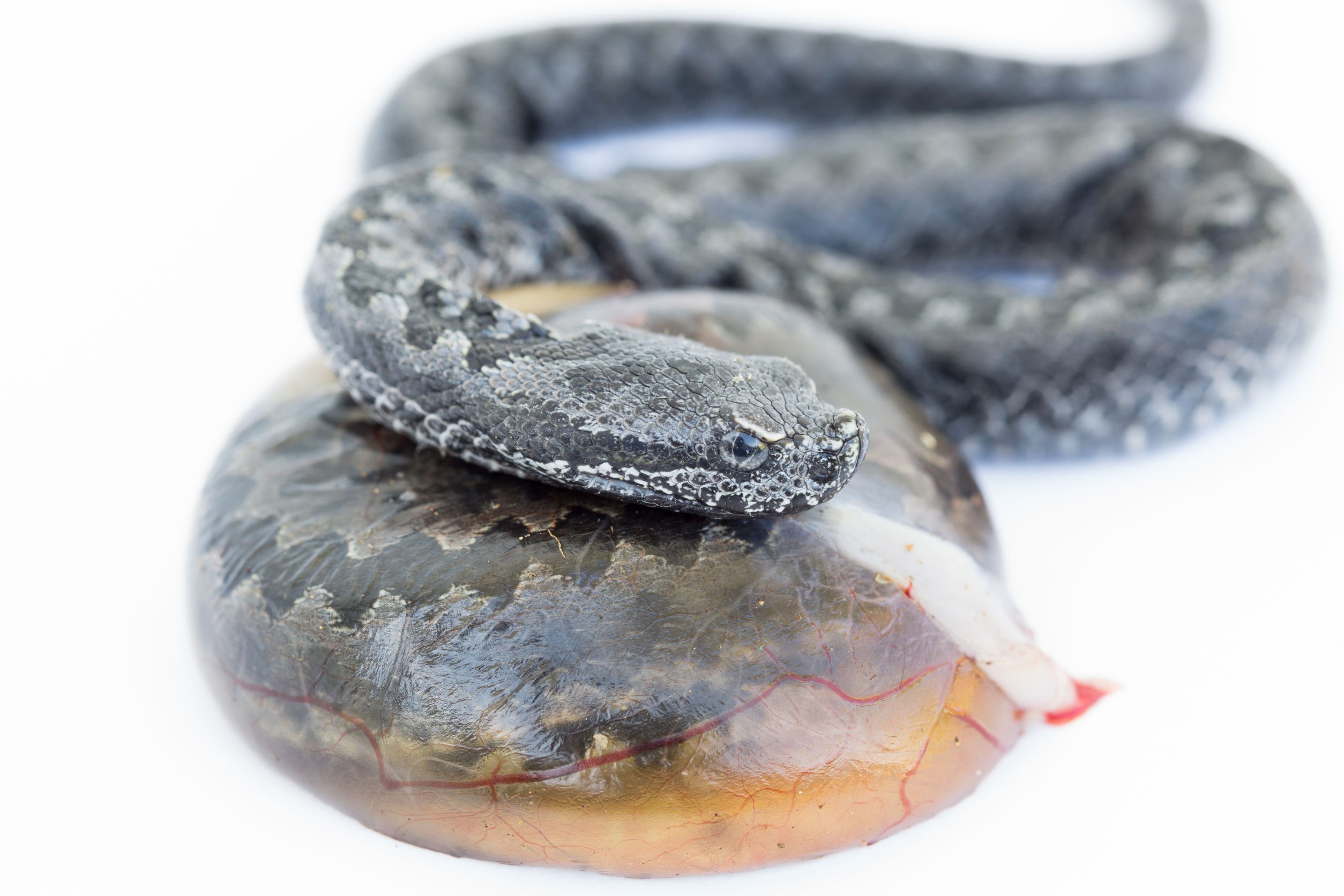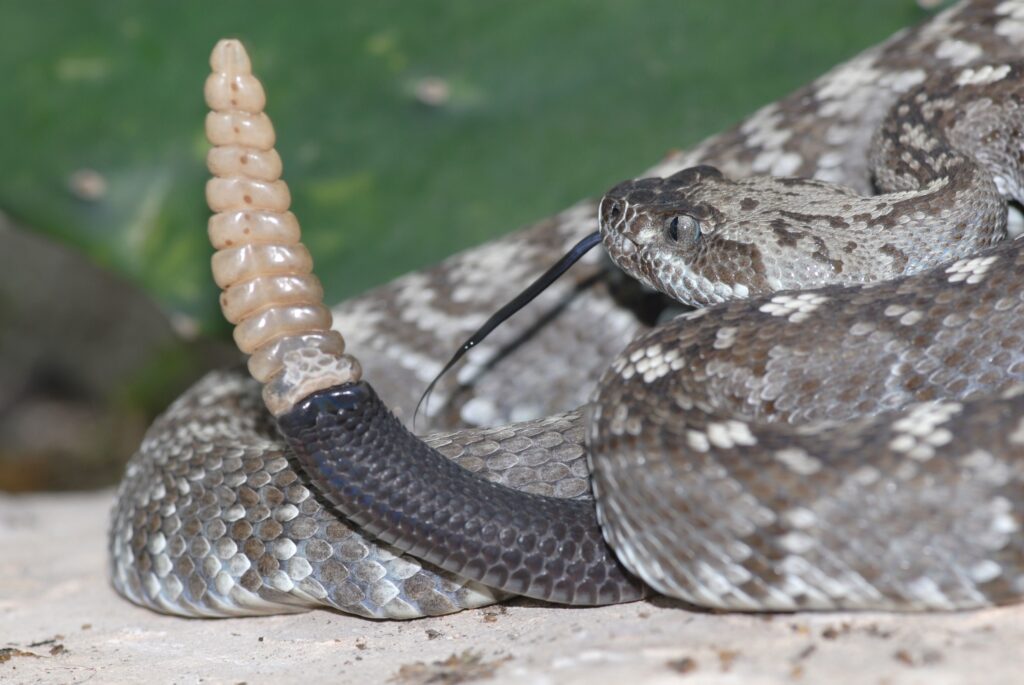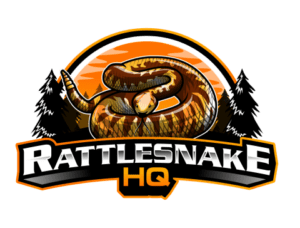
If you’re taking a hike, you may see a baby rattlesnake hiding in the rocks or the dry grass. You keep your distance, but suddenly worry there is a second one close by. So, do baby rattlesnakes travel in pairs?
Here’s what I’ve seen:
Baby rattlesnakes are solo hunters and do not travel in pairs, even during childhood. As long as you don’t see a nest, the baby is likely alone. Baby rattlesnakes will stay with their mother for the first week of their life.
After this, the mother will leave her children and they are on their own.
While rattlesnakes live with their mother for the first week, they will travel alone after that point to seek their own territory. The habits and life cycle of a rattlesnake are fascinating and we’ll cover them below.
The First Week of Life for Baby Rattlesnakes
Snakes are only with their mother and siblings for the first week of their life. This means the mother has only one week with her snakelings. This is a pretty short period, so what all happens during the first week?
Birth
Snakes are ovoviviparous which means they do not lay eggs outside of their bodies. Instead, after the eggs have been fertilized, the mother will carry the eggs inside her for around 3 months. She then gives birth to live snake babies who are born inside a thin sack. The sack they are in is like a soft-shelled egg. The babies then have to break the thin membrane of the sack to be free after the mother has given birth.
Receiving Nutrients
Rattlesnakes (just like all other reptiles) do not nurse their young. Nursing young children is specific to mammals. In the first week, rattlesnakes cannot hunt on their own, so instead, they survive off of the yolk which was in their egg sack. This has all the nutrients they needed as fetuses and it will last for the first week of their life.
Home Life
Mothers take the primary role of protecting the young during this first week. Mother rattlesnakes are often very overprotective of their babies. They will protect them from predators and guard them against danger. She will also keep them warm in the den where they are staying.
The mother rattlesnake will allow her young to explore close around the den, but if they travel too far, she will “tap or nudge” them if they travel too far from her.
So if you see a baby rattlesnake by itself with no mother in sight, it is probably old enough to have moved out.
First Shed
As the first week comes to an end, baby rattlesnakes will shed their first skin.
This is when their rattle begins to form. They don’t have fully developed rattles as babies. After the first shedding, the beginning of their rattle is called a “button” Rattlesnakes are born without rattles, and gain a new “ring” to their rattle after each shedding. For the first 2 or so “rings” their rattle will not make any noise.
This can be dangerous for potential victims because you will not hear the warning of a rattle before the baby rattlesnake bites.
After their first shedding, rattlesnakes are fully mature and ready to hunt and live on their own. The mother will leave the young ones soon after their first shedding, allowing the young rattlesnakes to go out on their own to hunt and survive.
Rattlesnakes then leave their siblings to start their own life.

Facts About Baby Rattlesnakes
Appearance
Rattlesnakes are born about 10 inches long. They can grow to reach about 3-5 feet long over their lifespan. Rattlesnakes are covered in a unique speckled pattern that allows them to blend in with their surroundings. The dark and light splotches on their skin replicate the highlights and shadows of the rocks and tall grass where they often hide, waiting for their prey.
Baby rattlesnakes are born with this pattern as well. Their scale colorings are not only used for camouflage but also to warn potential predators that they are rattlesnakes and have venom. This protects the young and prevents many of them from being attacked by predators.
Rattlesnakes can simply stretch out across rocks to blend in better or curl themselves up into a ball to avoid predators.
Rattles

As mentioned before, baby rattlesnakes are not born with rattles on the end of their tails. They grow their rattles over time as they shed their skin.
Contrary to popular misconception, you cannot tell the age of a rattlesnake based on its rattle size. Rattlesnakes shed their skin 1-4 times a year, so you could be 4 times off your attempt to tell their age based on how many segments are in their rattle.
A rattlesnake’s rattle is created from interlocking rings made of keratin.
This is the same material that our fingernails are made of. When shaken or vibrated quickly, it creates a hissing sound to warn prey and predators of rattlesnakes that they are a rattlesnake and are venomous. This is a highly revolutionized predator-avoidance system. Predators and prey know from the sound that they need to stay away.
Venom
Baby rattlesnake venom is actually more toxic than adult rattlesnake venom. This does not mean it is more harmful or dangerous. Although they are dangerous even from birth, baby rattlesnakes do not hold nearly as much venom as their adult counterparts.
Because of their small size, a bite from a baby rattlesnake may feel like a scratch from a rock or a bug bite. They will often escape quickly after biting, which causes many victims of their bites to confuse a baby rattlesnake bite for something else. Although they are not as dangerous as adult rattlesnakes, if left untreated, a bite from a baby rattlesnake can still cause serious issues for you. If you have a mysterious scratch, especially on your foot, it is always safest to call your local poison control center.
According to the CDC, you should watch for these warning signs that indicate you have been bitten:
- Puncture marks at the wound
- Redness, swelling, bruising, bleeding, or blistering around the bite
- Severe pain and tenderness at the site of the bite
- Nausea, vomiting, or diarrhea
- Labored breathing (in extreme cases, breathing may stop altogether)
- Rapid heart rate, weak pulse, low blood pressure
- Disturbed vision
- Metallic, mint, or rubber taste in the mouth
- Increased salivation and sweating
- Numbness or tingling around your face and/or limbs
- Muscle twitching
Click here to view the complete page on rattlesnake bites on the CDC website.
